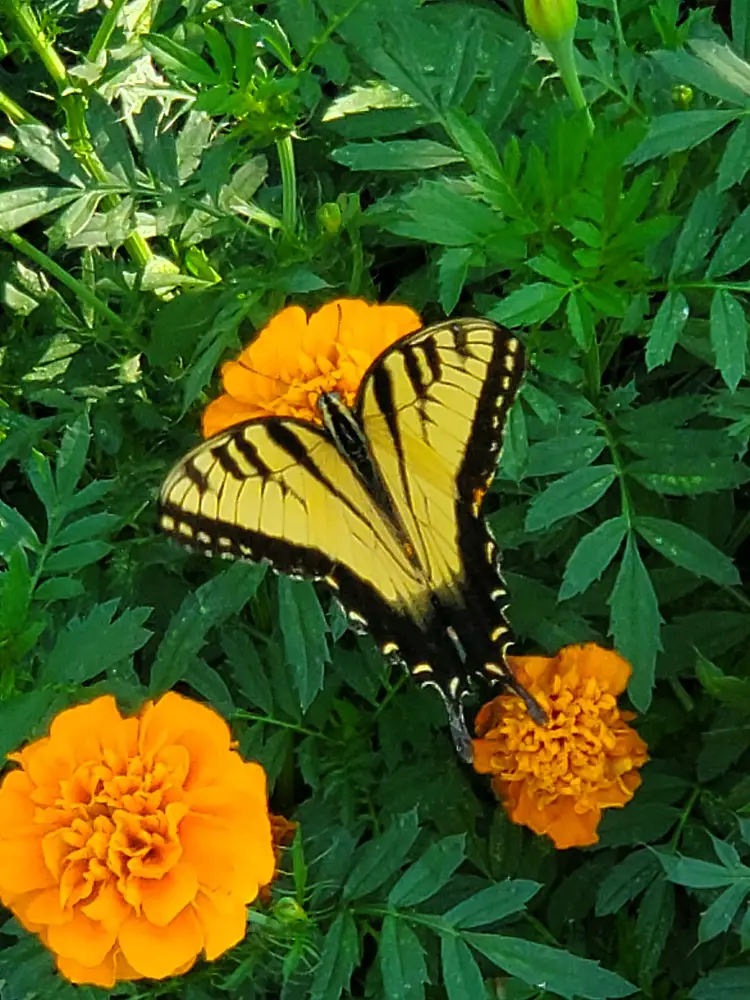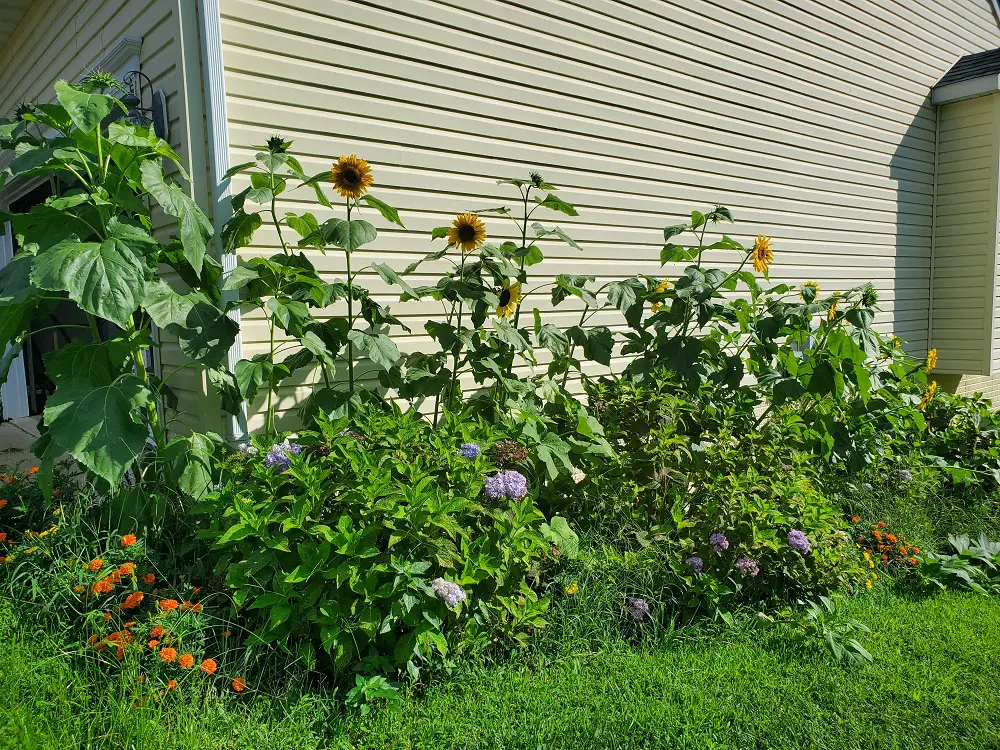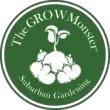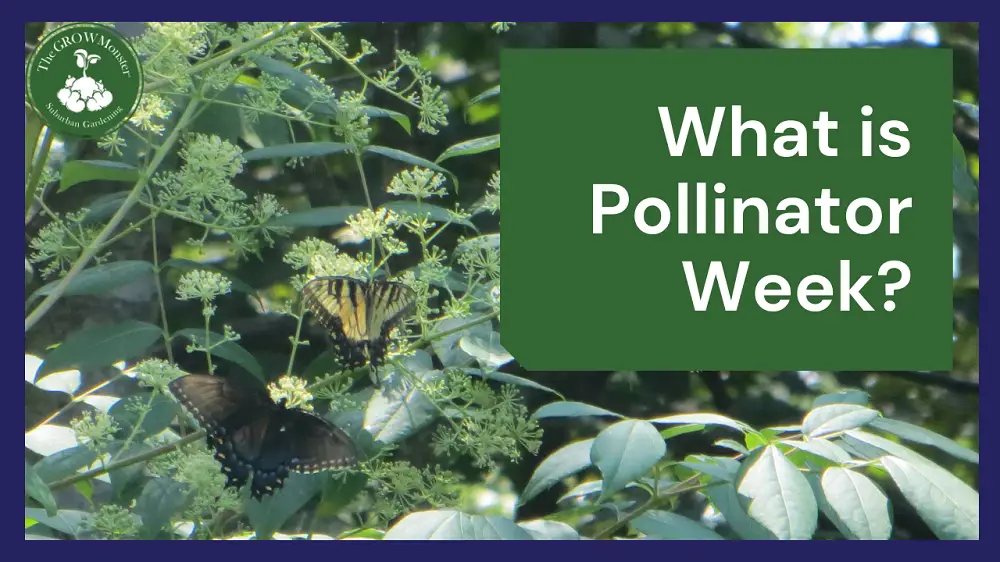Every year, during a week in June, you might see mention of Pollinator Week and wonder what it is and how you can participate. I learned about it this year and The Grow Monster will be taking part by hosting some Instagram and Facebook lives to help teach people about the importance of pollinators in our suburban garden. The Grow Monster also decided to write this Pollinator Week series to help others learn about the importance of pollinators in the garden.
Pollinator Week is a week in June each year that people all over the world come together to raise awareness of the importance pollinators play in all our ecosystems. From birds and bats to butterflies, bees, and beetles; pollinators are a crucial part in the continuation of many plants across the globe. This week is set aside to learn about pollinators, what may be endangering them, and how we can help protect pollinators.
What is a Pollinator?
Pollinators are animals that help a plant produce fruit and seeds. They do this by moving pollen from flower to flower and plant to plant. This fertilizes the plant so that it can reproduce. The pollinators are taking pollen from the male flower to a female flower. Sometimes it will be on another flower on the same plant and sometimes it will be on a different plant or even a different variety of plant.
This process of fertilization is called pollination in plants and without it the plant will not be able to create fruit, seeds, or additional plants. If we didn’t have pollinators it would be much harder to grow produce! Not all plants need animals to move the pollen for fertilization- some plants are self-pollinating or use the air or even water to move pollen between flowers. But, for the flowers that need the help of an animal, they will do everything they can to attract those pollinators. This includes providing sweet nectar for the animal to eat, shade or a space to rest, and even materials for the animal to build its home.

Examples of pollinators are birds, butterflies, bees, beetles, wasps, ants, bats, and even humans. Any animal that helps facilitate the transport of pollen between flowers is considered a pollinator. There are some animals that can be observed pollinating flowers more often. Some animals like butterflies may be transporting the pollen on their legs between flowers without even knowing it!
How Do We Celebrate Pollinator Week?
There are local activities happening both in-person and virtually to help celebrate pollinator week. Check out this handy map to see if there is an event near you. You could take a nature walk to see all the native species in your area, visit your local garden center to see which plants they recommend in your area, create a butterfly or hummingbird garden, or just sit and enjoy your own pollinator garden.
The possibilities really are endless to help spread awareness about pollinators. You could read our Pollinator Week series for ideas on creating your own pollinator garden by adding pollinator friendly plants, promoting native pollinators and plants, and attracting pollinators to your vegetable garden. It would be a great idea to plan out your own garden, whether you are just beginning or have had one for years, based on the pollinators in your area. The garden is never really done so take some time to think about pollinators and get growing!

Another way to participate in Pollinator Week is to write letters or call the offices of your local, state, and national representatives to urge them to support pollinator week. Some people even ask local businesses to get involved by lighting up yellow and orange in support of pollinators.
Pollinator Organizations
The Pollinator Partnership is an organization that hosts activities throughout the year focusing on pollinator education. This year, they are hosting the Pollinator Power Party every day during the week to raise awareness. Check out their daily list of speakers and see what you can learn this year.
The Xerxes Society is an organization that focuses on conservation through advocacy, education, policy, and community. Their Pollinator Conservation Program is an array of resources to help you grow pollinator-friendly flowers, educate your local community, provide nesting space for pollinators, and a reminder to avoid pesticides that are harmful for pollinators.
Monarch Watch invites citizen scientists to help volunteer tagging Monarchs to add to the migration data that this non-profit has been collecting since 1992. You could also take part in their Monarch Waystation Program and create a habitat that is welcoming to preserve the Monarch butterfly for years to come.
Pollinator Pathways is another organization that helps to establish friendly habitats for butterflies, bees, hummingbirds, and other pollinating animals. Check here to see if they have a program near you. Join the movement to create pesticide free corridors of native plants that provide nutrition and habitat for pollinators.
The National Park Service hosts various events across the United States and they also have these nifty Pollinator Planting Guides to download based on your region to help everyone have a more pollinator friendly garden.
The National Association of Conservation Districts (NACD) has provided a Pollinator Field Day Curriculum Guide that would be great for families, home-school, summer camps, and teachers to use to further educate on the importance of pollinators. The NACD partners with the Pollinator Partnership to bring awareness each year through Pollination Week.
There are many more organizations like these that help educate, preserve, and protect pollinators across the United States and the rest of the world. These organizations are great resources and starting points to see what you can do in your own garden to help support pollinators in your local area.
Conclusion
No matter what you eat, there was sure to be a pollinator involved in the process at some point. These precious butterflies, bees, birds, beetles, bats, and more are important to our ecosystem and we need to make sure that we are creating environments where they are allowed to thrive. Pollinator week helps educate us and gives us a chance to see what else we can do to help these pollinators.
Continue reading the next articles in our Pollinator Week Series:
What Should Be in a Pollinator Garden
Pollinator Friendly Plants



Pingback: What Should Be in a Pollinator Garden? - The Grow Monster
Pingback: Pollinator Friendly Plants - The Grow Monster
Pingback: How Can We Promote Native Pollinators? - The Grow Monster